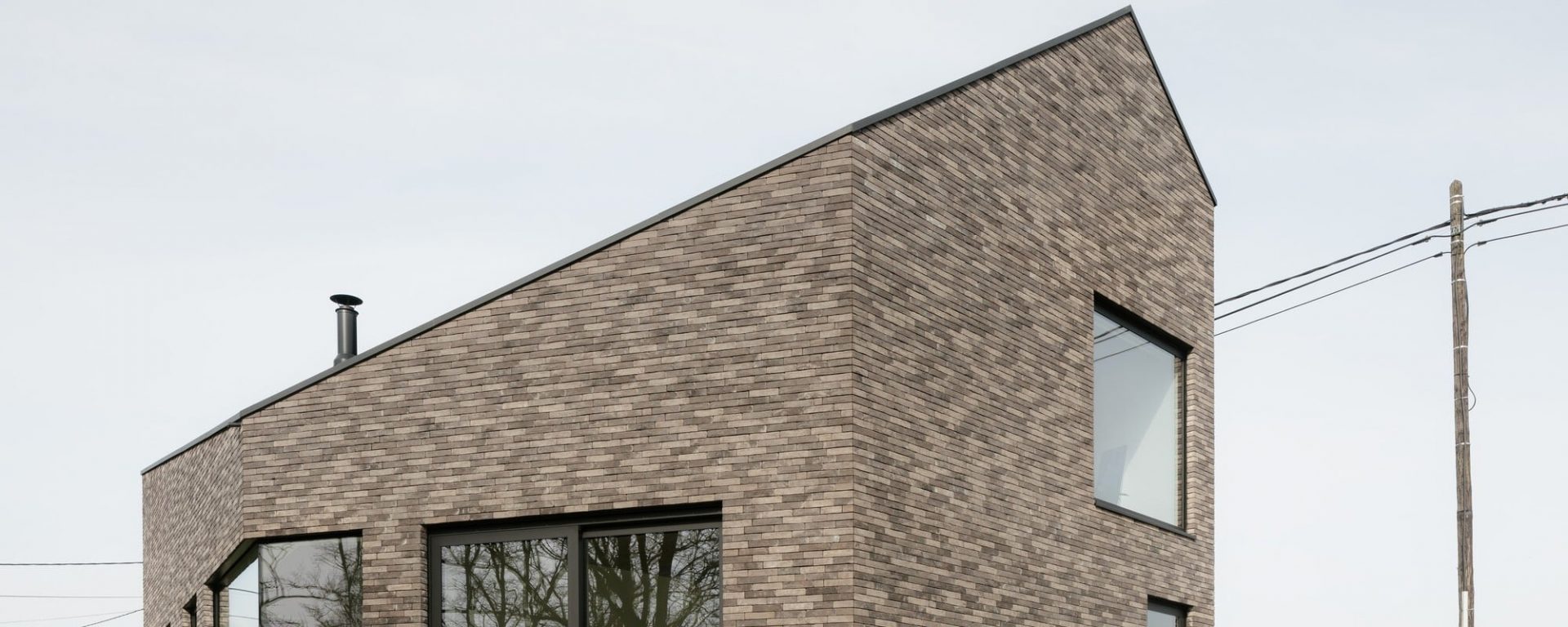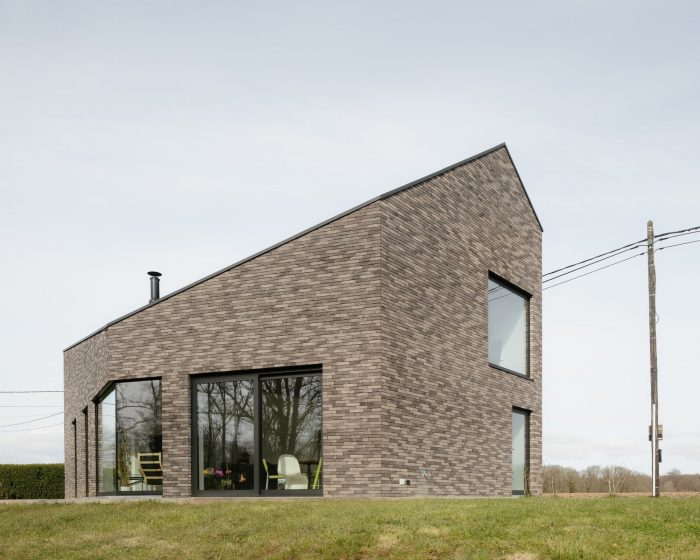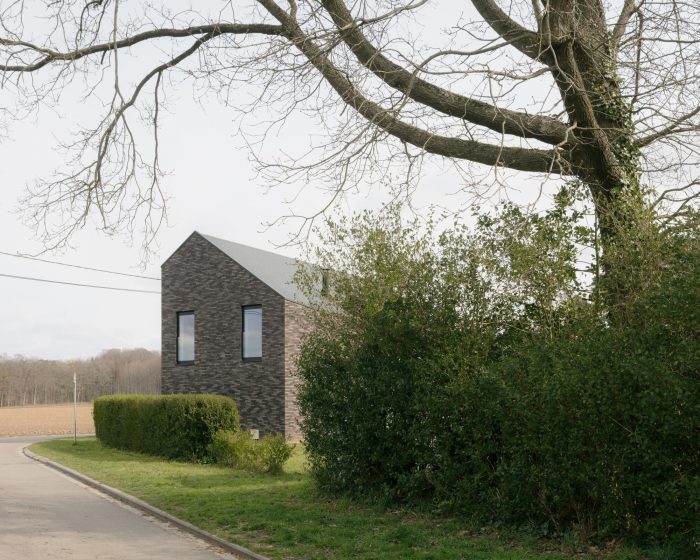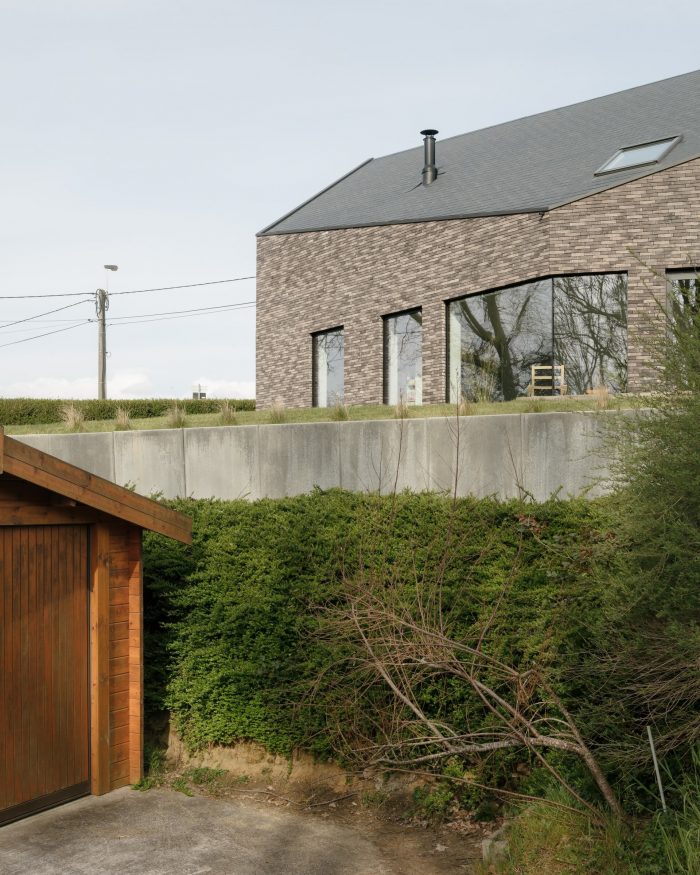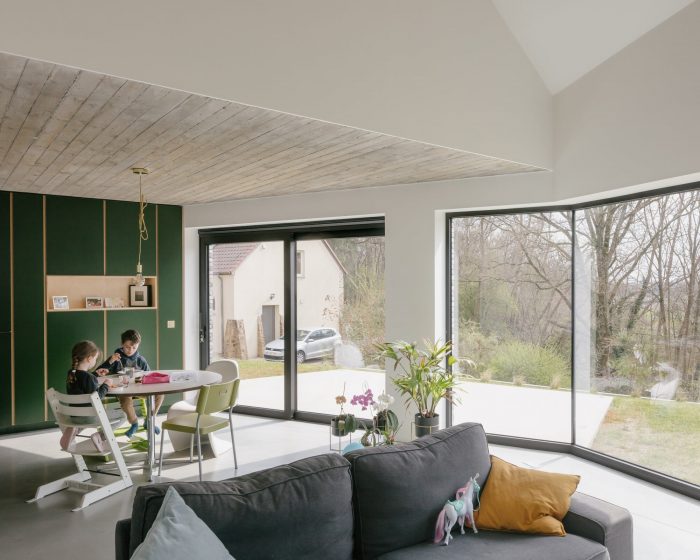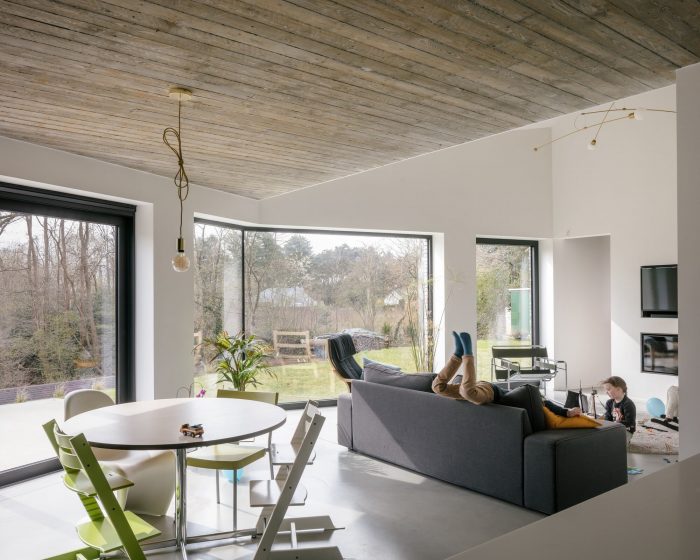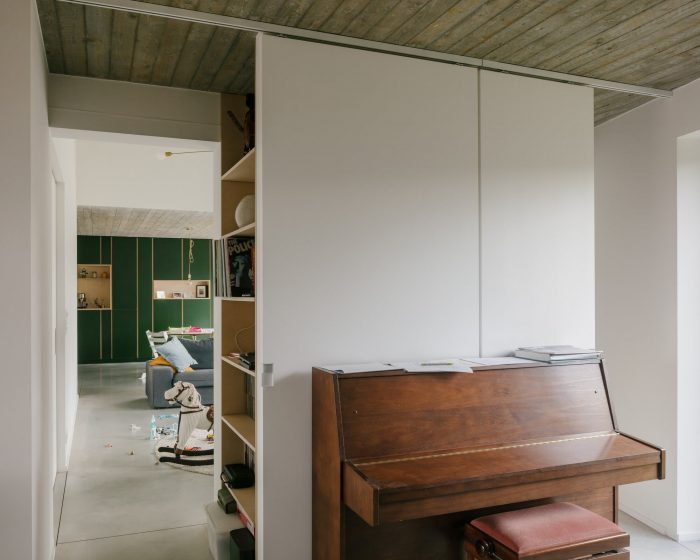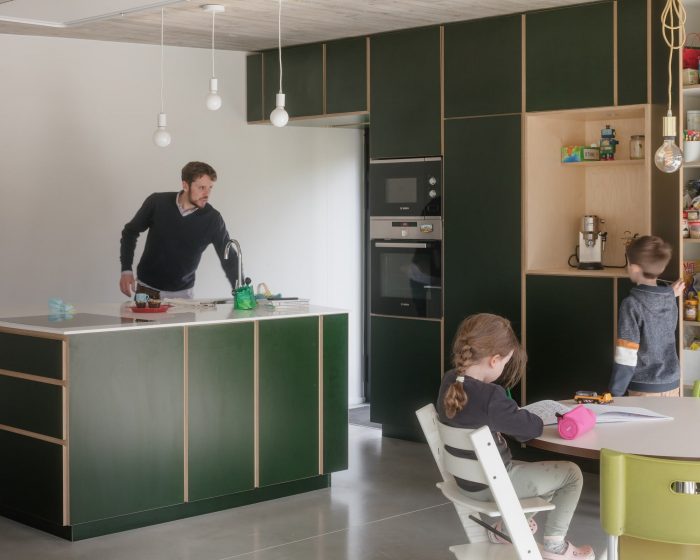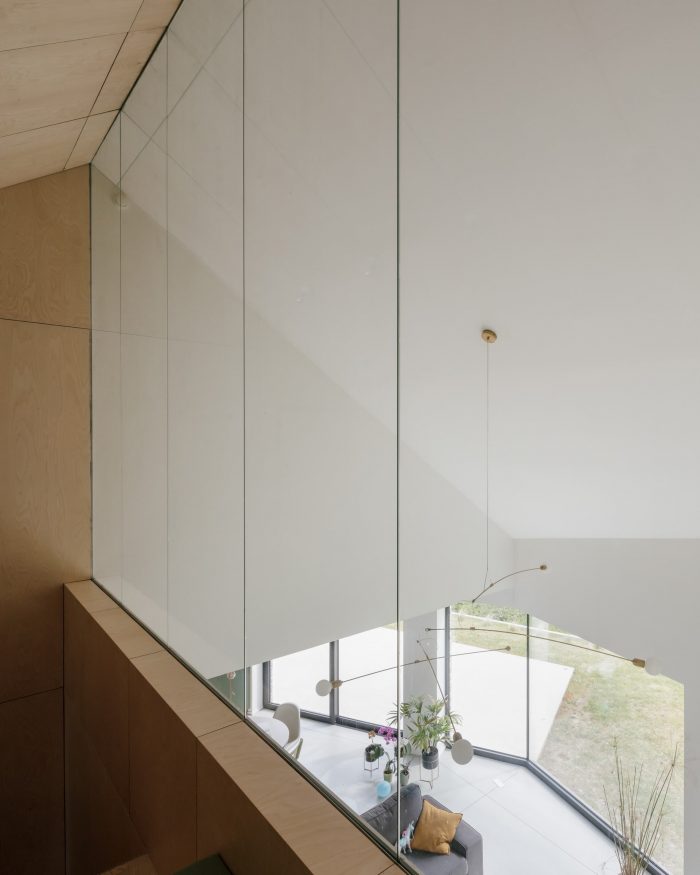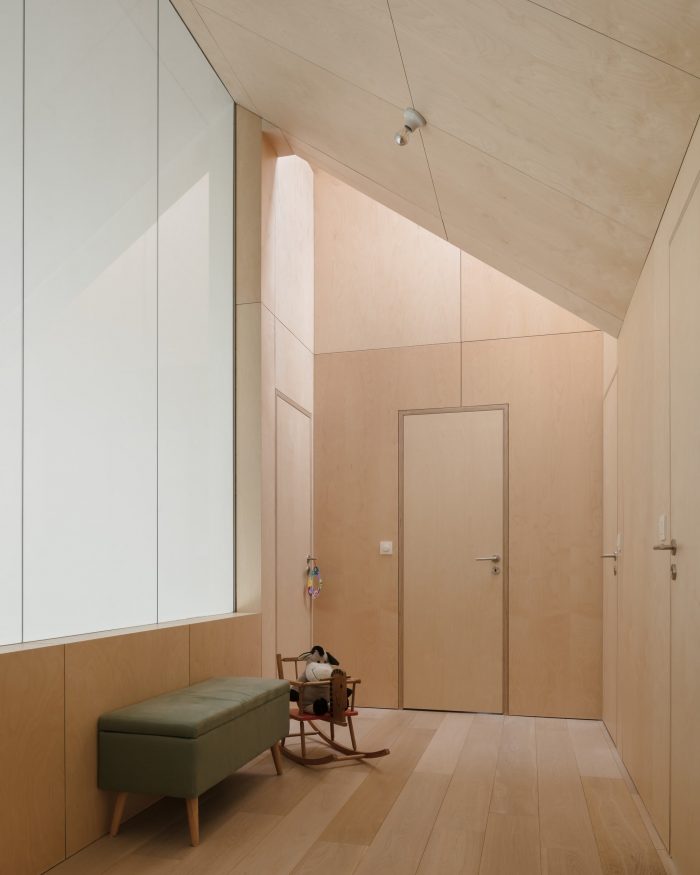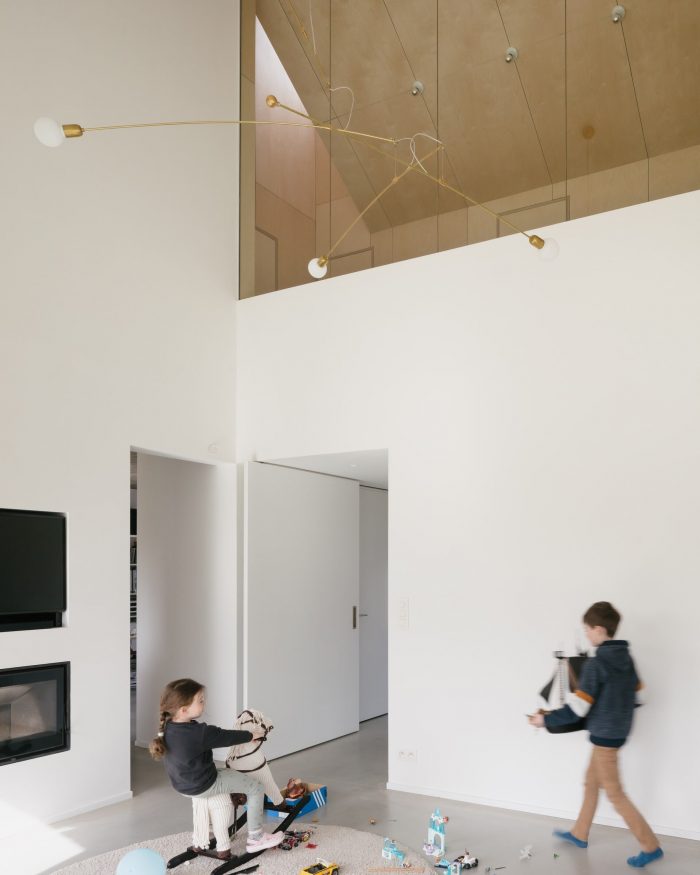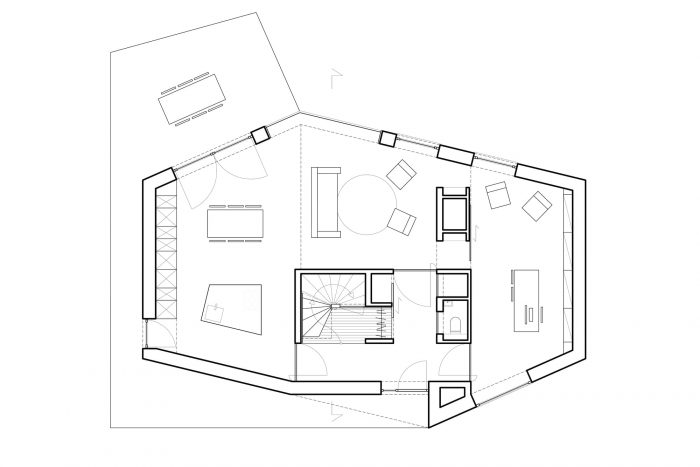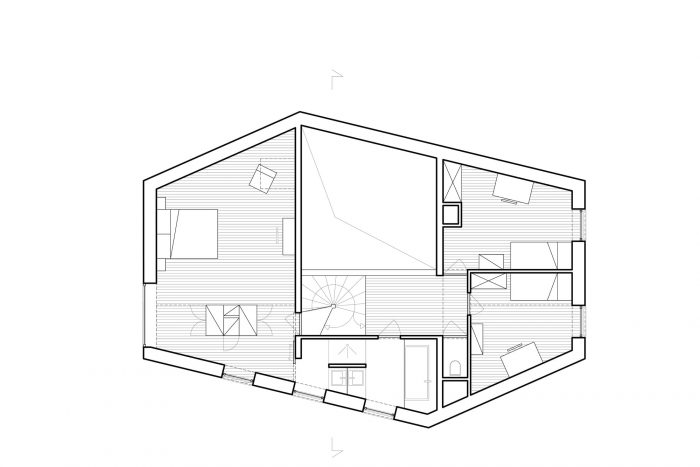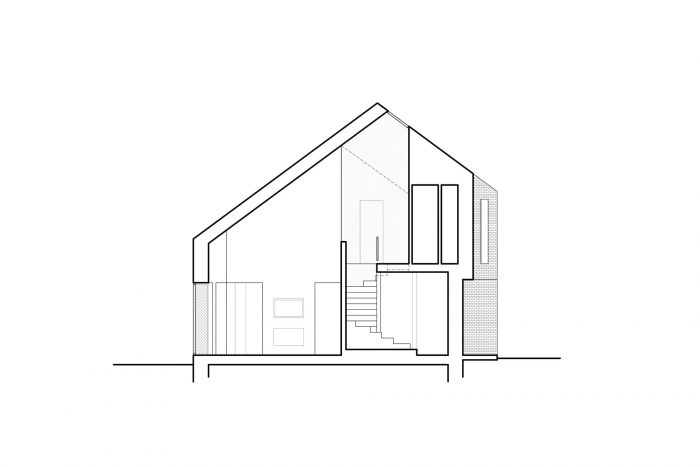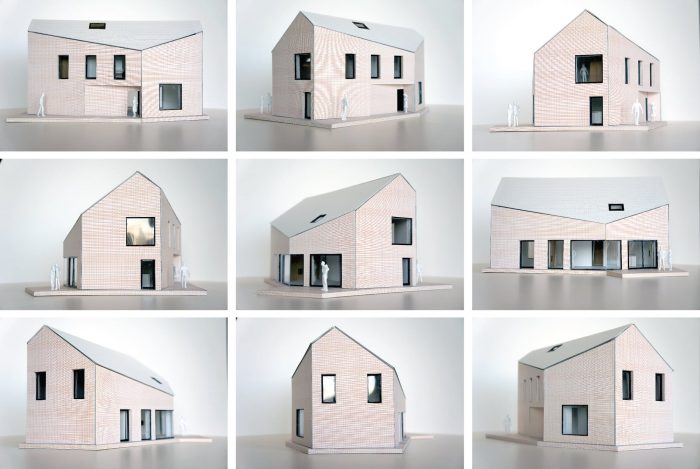这座独栋别墅位于农村环境的中心,在一个复杂的角落里,在一片树林的边缘。场地的特殊配置和1960年代住房的城市周边风格背景都导致我们对综合建筑的意义提出质疑。
This single-family house is located in the heart of a rural environment on a complex corner plot, on the edge of a wood. Both the particular configuration of the site and the peri-urban stylistic context of 1960s housing led us to question the meaning of integrated architecture.
在模仿、参考和断裂之间,这个项目提出要利用环境的限制和潜力。建筑的反应既要立足于它的物理和文化环境,又要与它们发生独特的断裂。这就导致了几何学和空间性成为这些紧张关系的伤疤。
Between mimicry, reference and rupture, this project proposes to take advantage of the constraints but also of the potential of the environment. The architectural response wants to be both anchored in its physical and cultural environment but also singularly in rupture with them. This results in geometries and spatialities as scars of these tensions.
正交的平面图被它所伴随的外墙的绘制所扰乱,以关闭和扩大内部空间。房子的三方组成围绕着流通的核心和强调白天和夜晚区域之间视觉联系的空隙来组织整个项目。尽管表面上看计划是开放的,但每个空间都是确定的,并通过高度、视野和材料的变化确保其自身的身份。
The orthogonal plan is disturbed by the drawing of the facades that it accompanies to close and expand the interior spaces. The tripartite composition of the house organizes the entire program around the core of the circulation and a void accentuating the visual connections between the day and night areas. Despite the apparent plan openness, each space is defined and has its own identity ensured by variations in heights, views, and materials.
Architects: DeDal architectes
Area : 210 m²
Year : 2021
Photographs :Stijn Bollaert
Lead Architect : David Lo Buglio
City : Grez-Doiceau
Country : Belgium

